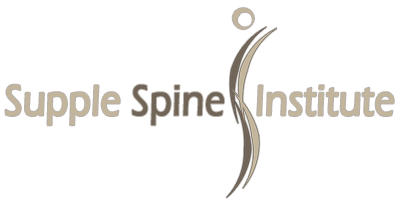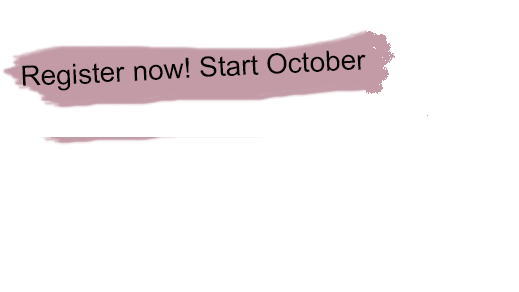Basic Veterinary Chiropractic Training Programme
The Basic Training in Veterinary Chiropractic by Supple Spine Institute focuses exclusively on companion animals (dogs and cats). Depending on the nationality of the participants, the training is conducted in either Dutch or English and consists of 5 modules, each lasting 3 days.
Each module focuses on a specific region of the body. In the morning, theory is discussed, covering topics such as anatomy, biomechanics, pathology, and neurology.
The afternoon session involves practical instruction. Techniques are taught and practiced in small groups.
The fifth module is the integrated module where all theory and techniques are brought together in a comprehensive review and includes the final exam.
The objective for each student is to develop the skills to diagnose and treat structural and functional problems of the spine in their patients. Alongside practical training in small groups of no more than 3-5 students per instructor, the emphasis of the training is therefore on functional neurology.
Each module starts on Thursday morning and lasts until Saturday afternoon, with intervals of 4-6 weeks between modules. During these intervals, students are required to study course material, practice techniques, write a case report, complete assigned reading tasks, and submit homework assignments.
Prerequisite Requirements
The training is only accessible to veterinarians, animal physiotherapists, (animal and human) osteopaths, and human chiropractors. As the quality of education varies by country, each application is reviewed to determine if the prerequisite education is sufficient.
Number of Participants
Given the importance of practical skills, the number of places in the training is limited to ensure that everyone receives adequate guidance, especially during practical lessons.
Language
The training is conducted in either Dutch or English, depending on the nationality of the participants.
Interim Tests and Final Exam
From the second module onwards, students have both a written and practical test on the theory and techniques covered in the previous module(s). An average score of 80% on both theory and practical is required across all modules to be eligible for the final exam. The final exam also consists of both a written and practical part, with a minimum score of 80% required to pass each component.
Location
The training takes place at the premises of Jyoti - Holistic Practice / Supple Spine Institute
van Riemsdijklaan 122
1945 XR Beverwijk
Curriculum
The curriculum of Supple Spine Institute meets the requirements of international umbrella organisations, but focuses exclusively on companion animals. The entire course consists of 5 modules of 3 days each.
Theory and practice
The time spent on both theoretical and practical lessons is adapted to the level of each class. Because we prefer working with smaller groups, we often get through the material faster, allowing more time to develop spinal palpation skills for mobility, chiropractic correction of patients and more advanced techniques. Demonstrations are given several times.
The structure of the modules is as follows:
Module I – Cervical
Theory
General anatomy
Anatomy of the cervical region
Biomechanics of the cervical region
Pathology of the cervical region
Chiropractic: history and philosophy
The basics of chiropractic: terminology and listings
Basic principles of chiropractic corrections
Cervical techniques
Jaw joint and stomatognathic system
Case management
Practice
Topography
Palpation skills
Cervical chiropractic correction techniquesModule II – Thoracolumbar
Short theoretical and practical test on the previous moduleTheory
Repetition of cervical techniques
Anatomy of the thoracolumbar region
Biomechanics of the thoracolumbar region
Pathology of the thoracolumbar region
Functional neurology
Cranial nerves
Thoracolumbar techniques
Collars and leashes
Case managementPractice
Topography
Palpation skills
Thoracolumbar chiropractic correction techniquesModule III – Sacrum/pelvis
span>Short theoretical and practical test on the previous modules
Theory
Repetition of thoracolumbar techniques
Anatomy of the sacrum/pelvis
Biomechanics of the sacrum/pelvis
Pathology of the sacrum/pelvis
Functional neurology
Plexus brachialis and lumbosacralis
Sacrum/pelvis techniques
Rehabilitation
Practice
Topography
Palpation skills
Chiropractic correction techniques for the sacrum/pelvisModule IV – Extremities
Short theoretical and practical test on the previous modules
Theory
Repetition of techniques for the sacrum/pelvis
Anatomy of the extremities
Biomechanics of the extremities
Pathology of the extremities
Neurological research
Gait assessment
Rehabilitation
Extremities techniques
Case management
Practice
Topography
Gait assessment
Palpation skills
Chiropractic correction techniques for the extremitiesModule V – Integrated module
Theory
Repetition of all techniques
Communication
Dog sports and competition
Dog nutrition
Case management: case presentation by students
Practice
All chiropractic correction techniques
Case management: working with chiropractic patientsFinal exam (theory and practice)
To register for the Basic Veterinary Chiropractic Training Programme click here.
Call us on +31 251 234 295 for information
van Riemsdijklaan 122, 1945 XR Beverwijk, The Netherlands, contact@supplespine.nl
©2025 | Supple Spine Institute | Login

